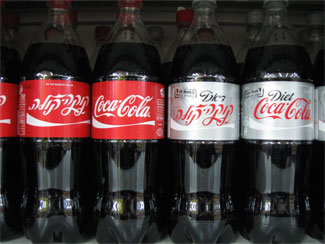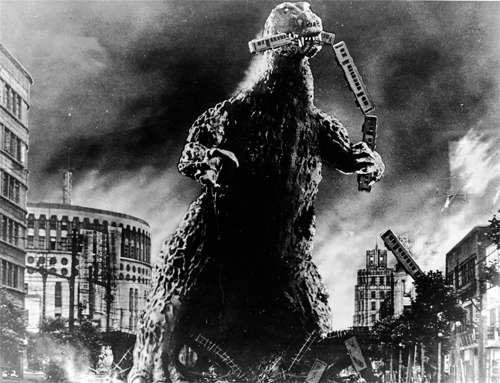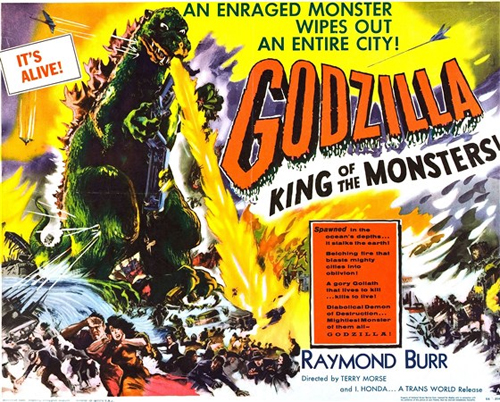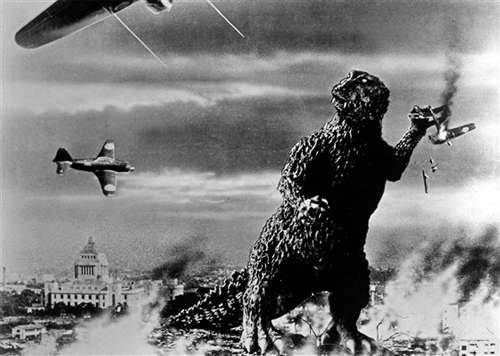Brand
by Wikipedia
June 20, 2017
NOTICE: THIS WORK MAY BE PROTECTED BY COPYRIGHT
YOU ARE REQUIRED TO READ THE COPYRIGHT NOTICE AT THIS LINK BEFORE YOU READ THE FOLLOWING WORK, THAT IS AVAILABLE SOLELY FOR PRIVATE STUDY, SCHOLARSHIP OR RESEARCH PURSUANT TO 17 U.S.C. SECTION 107 AND 108. IN THE EVENT THAT THE LIBRARY DETERMINES THAT UNLAWFUL COPYING OF THIS WORK HAS OCCURRED, THE LIBRARY HAS THE RIGHT TO BLOCK THE I.P. ADDRESS AT WHICH THE UNLAWFUL COPYING APPEARED TO HAVE OCCURRED. THANK YOU FOR RESPECTING THE RIGHTS OF COPYRIGHT OWNERS.
A brand (or marque for car model) is a name, term, design, symbol, or other feature that distinguishes an organization or product from its rivals in the eyes of the customer.[2][3] Brands are used in business, marketing, and advertising.
Initially, livestock branding was adopted to differentiate one person’s cattle from another's by means of a distinctive symbol burned into the animal’s skin with a hot branding iron. If a person would steal the animals, anyone could detect the symbol and deduce the actual owner. However, the term has been extended to mean a strategic personality for a product or company, so that ‘brand’ now suggests the values and promises that a consumer may perceive and buy into.
Branding is a set of marketing and communication methods that help to distinguish a company or products from competitors, aiming to create a lasting impression in the minds of customers. The key components that form a brand's toolbox include a brand’s identity, brand communication (such as by logos and trademarks), brand awareness, brand loyalty, and various branding (brand management) strategies.[4]
Brand equity is the measurable totality of a brand's worth and is validated by assessing the effectiveness of these branding components.[5] As markets become increasingly dynamic and fluctuating, brand equity is a marketing technique to increase customer satisfaction and customer loyalty, with side effects like reduced price sensitivity.[4] A brand is in essence a promise to its customers of they can expect from their products, as well as emotional benefits.[4] When a customer is familiar with a brand, or favours it incomparably to its competitors, this is when a corporation has reached a high level of brand equity.[5]
Many companies believe that there is often little to differentiate between several types of products in the 21st century, and therefore branding is one of a few remaining forms of product differentiation.[6]
In accounting, a brand defined as an intangible asset is often the most valuable asset on a corporation’s balance sheet. Brand owners manage their brands carefully to create shareholder value, and brand valuation is an important management technique that ascribes a money value to a brand, and allows marketing investment to be managed (e.g.: prioritized across a portfolio of brands) to maximize shareholder value. Although only acquired brands appear on a company's balance sheet, the notion of putting a value on a brand forces marketing leaders to be focused on long term stewardship of the brand and managing for value.
The word ‘brand’ is often used as a metonym referring to the company that is strongly identified with a brand.
Marque or make are often used to denote a brand of motor vehicle, which may be distinguished from a car model. A concept brand is a brand that is associated with an abstract concept, like breast cancer awareness or environmentalism, rather than a specific product, service, or business. A commodity brand is a brand associated with a commodity.

Ferrari is the world's most powerful brand according to Brand Finance.[1]
History
The word, brand, derives from the ancient North Scandavian term “brandr” meaning "to burn." It is a reference to the practice of using branding irons to burn a mark into the hides of livestock, and may also refer to the practice of craftsmen engraving brand names into products, tools or personal belongings.[7]
The oldest generic brand, in continuous use in India since the Vedic period (ca. 1100 B.C.E to 500 B.C.E), is the herbal paste known as Chyawanprash, consumed for its purported health benefits and attributed to a revered rishi (or seer) named Chyawan.[8] This product was developed at Dhosi Hill, an extinct volcano in northern India.
Roman glassmakers branded their works, with Ennion being the most prominent.[9]
The Italians used brands in the form of watermarks on paper in the 13th century.[10] Blind Stamps, hallmarks, and silver-makers' marks are all types of brand.
Although connected with the history of trademarks[11] and including earlier examples which could be deemed protobrands (such as the marketing puns of the Vesuvinum wine jars found at Pompeii),[12] brands in the field of mass-marketing originated in the 19th century with the advent of packaged goods. Industrialization moved the production of many household items, such as soap, from local communities to centralized factories. When shipping their items, the factories would literally brand their logo or insignia on the barrels used, extending the meaning of brand to that of a trademark.
Bass & Company, the British brewery, claims their red-triangle brand as the world's first trademark. Tate & Lyle of Lyle's Golden Syrup makes a similar claim, having been recognized by Guinness World Records[13] as Britain's oldest brand, with its green-and-gold packaging having remained almost unchanged since 1885. Another example comes from Antiche Fornaci Giorgi in Italy, which has stamped or carved its bricks (as found in Saint Peter's Basilica in the Vatican City) with the same proto-logo since 1731.
Cattle-branding has been used since Ancient Egypt. The term, maverick, originally meaning an un-branded calf, came from a Texas pioneer rancher, Sam Maverick, whose neglected cattle often got loose and were rounded up by his neighbors. Use of the word maverick spread among cowboys and came to apply to unbranded calves found wandering alone.[14]
Factories established during the Industrial Revolution introduced mass-produced goods and needed to sell their products to a wider market - to customers previously familiar only with locally produced goods. It quickly became apparent that a generic package of soap had difficulty competing with familiar, local products. The packaged-goods manufacturers needed to convince the market that the public could place just as much trust in the non-local product. Pears soap, Campbell's soup, soft drink Coca-Cola, Juicy Fruit chewing gum, Aunt Jemima pancake mix, and Quaker Oats oatmeal were among the first products to be "branded" in an effort to increase the consumer's familiarity with their merits. Other brands which date from that era, such as Uncle Ben's rice and Kellogg's breakfast cereal, furnish illustrations of the trend.
Around 1900, James Walter Thompson published a house ad explaining trademark advertising. This was an early commercial explanation of what we now know as branding. Companies soon adopted slogans, mascots, and jingles that began to appear on radio and early television. By the 1940s,[15] manufacturers began to recognize the way in which consumers were developing relationships with their brands in a social/psychological/anthropological sense.
Manufacturers quickly learned to build their brands' identity and personality such as youthfulness, fun or luxury. This began the practice we now know as branding today, where the consumers buy the brand instead of the product. This trend continued to the 1980s, and is now quantified in concepts such as brand value and brand equity. Naomi Klein has described this development as "brand equity mania".[16] In 1988, for example, Philip Morris purchased Kraft for six times what the company was worth on paper; it was felt[by whom?] that what they really purchased was its brand name.
April 2, 1993, or Marlboro Friday, is often considered the death of the brand[16] – the day Philip Morris declared that they were cutting the price of Marlboro cigarettes by 20% in order to compete with bargain cigarettes. Marlboro cigarettes were noted[by whom?] at the time for their heavy advertising campaigns and well-nuanced brand image. In response to the announcement, Wall Street stocks nose-dived[16] for a large number of branded companies: Heinz, Coca-Cola, Quaker Oats, PepsiCo, Tide, and Lysol. Many thought the event signalled the beginning of a trend towards "brand blindness" (Klein 13), questioning the power of "brand value".
Concepts
Effective branding can result in higher sales of not only one product, but of other products associated with that brand. If a customer loves Pillsbury biscuits and trusts the brand, he or she is more likely to try other products offered by the company - such as chocolate-chip cookies, for example. Brand development, often the task of a design team, takes time to produce. Brand is the personality that identifies a product, service or company (name, term, sign, symbol, or design, or combination of them) and how it relates to key constituencies: customers, staff, partners, investors, etc.
Some people[who?] distinguish the psychological aspect (brand associations like thoughts, feelings, perceptions, images, experiences, beliefs, attitudes, and so on that become linked to the brand) of a brand from the experiential aspect. The experiential aspect consists of the sum of all points of contact with the brand and is known[by whom?] as the brand experience. The brand experience is a brand's action perceived by a person. The psychological aspect, sometimes referred to as the brand image, is a symbolic construct created within the minds of people, consisting of all the information and expectations associated with a product, with a service, or with the companyies providing them.
People engaged in branding seek to develop or align the expectations behind the brand experience, creating the impression that a brand associated with a product or service has certain qualities or characteristics that make it special or unique. A brand can therefore become one of the most valuable elements in an advertising theme, as it demonstrates what the brand owner is able to offer in the marketplace.[clarification needed] The art of creating and maintaining a brand is called brand management. Orientation of an entire organization towards its brand is called brand orientation. Brand orientation develops in response to market intelligence.
Careful brand management seeks to make products or services relevant to a target audience. Brands should be seen[by whom?]as more than the difference between the actual cost of a product and its selling price – they represent the sum of all valuable qualities of a product to the consumer.
A widely known brand is said[by whom?] to have "brand recognition". When brand recognition builds up to a point where a brand enjoys a critical mass of positive sentiment in the marketplace, it is said to have achieved brand franchise. Brand recognition is most successful when people can state a brand without being explicitly exposed to the company's name, but rather through visual signifiers like logos, slogans, and colors.[17] For example, Disney successfully branded its particular script font (originally created for Walt Disney's "signature" logo), which it used in the logo for go.com.
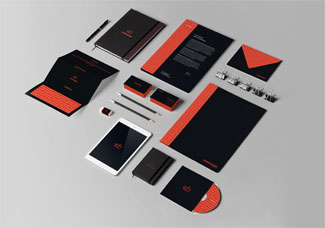
Visual Identity (example) created by Przemek Kowal[18]
Consumers may look on branding as an aspect of products or services, as it often serves to denote a certain attractive quality or characteristic (see also brand promise). From the perspective of brand owners, branded products or services can command higher prices. Where two products resemble each other, but one of the products has no associated branding (such as a generic, store-branded product), potential purchasers may often select the more expensive branded product on the basis of the perceived quality of the brand or on the basis of the reputation of the brand owner.
Corporate brand identity
Brand identity is the embodiment behind a corporation's reason for existence. Simply, the brand identity is a set of individual components, such as a name, a design, a set of imagery, a slogan, a vision, etc. which set the brand aside from others.[19][20]In order for a company to exude a strong sense of brand identity, it must have an in-depth understanding of its target market, competitors and the surrounding business environment.[4] Brand identity includes both the core identity and the extended identity.[4] The core identity reflects consistent long-term associations with the brand; whereas the extended identity involves the intricate details of the brand that help generate a constant motif.[4]
According to Kotler et al. (2009), a brand's identity may deliver four levels of meaning:
1. attributes
2. benefits
3. values
4. personality
A brand's attributes are a set of labels with which the corporation wishes to be associated. For example, a brand may showcase its primary attribute as environmental friendliness. However, a brand's attributes alone are not enough to persuade a customer into purchasing the product.[19] These attributes must be communicated through benefits, which are more emotional translations. If a brand's attribute is being environmentally friendly, customers will receive the benefit of feeling that they are helping the environment by associating with the brand. Aside from attributes and benefits, a brand's identity may also involve branding to focus on representing its core set of values.[19] If a company is seen to symbolise specific values, it will, in turn, attract customers who also believe in these values. For example, Nike's brand represents the value of a "just do it" attitude. Thus, this form of brand identification attracts customers who also share this same value. Even more extensive than its perceived values is a brand's personality.[19] Quite literally, one can easily describe a successful brand identity as if it were a person.[19] This form of brand identity has proven to be the most advantageous in maintaining long-lasting relationships with consumers, as it gives them a sense of personal interaction with the brand [21]Collectively, all four forms of brand identification help to deliver a powerful meaning behind what a corporation hopes to accomplish, and to explain why customers should choose one brand over its competitors.[4]
Brand awareness
Brand awareness involves a customers' ability to recall and/or recognise brands, logos and branded advertising. Brands helps customers to understand which brands or products belong to which product or service category. Brands assist customers to understand the constellation of benefits offered by individual brands, and how a given brand within a category is differentiated from competing brands, and thus the brand helps customers understand which brand satisfies their needs. Thus, the brand offers the customer a short-cut to understanding the different product or service offerings that make up a category.
Brand awareness is a key step in the customer's purchase decision process, since some kind of awareness is a precondition to purchasing. That is, customers will not consider a brand if they are not aware of it.[22] Brand awareness is a key component in understanding the effectiveness both of a brand's identity and of its communication methods.[23] Successful brands are those that consistently generate a high level of brand awareness, as this can often[quantify] be the pivotal factor in securing customer transactions.[24] Various forms of brand awareness can be identified. Each form reflects a different stage in a customer's cognitive ability to address the brand in a given circumstance.[5]
• Most companies aim for "Top-of-Mind". Top-of-mind awareness occurs when a brand pops into a consumer's mind when asked to name brands in a product category. For example, when someone is asked to name a type of facial tissue, the common answer, "Kleenex", will represent a top-of-mind brand.
• Unaided awareness (also known as brand recall or spontaneous awareness) refers to the brand or set of brands that a consumer can elicit from memory when prompted with a product category
• Aided awareness (also known as brand recognition) occurs when consumers see or read a list of brands, and express familiarity with a particular brand only after they hear or see it as a type of memory aide.
• Strategic awareness occurs when a brand is not only top-of-mind to consumers, but also has distinctive qualities which consumers perceive as making it better than other brands in the particular market. The distinction(s) that set a product apart from the competition is/are also known[by whom?] as the unique selling point or USP.
Brand recognition is the initial phase of brand awareness and validates whether or not a customer remembers being pre-exposed to the brand.[24] When customers experience brand recognition, they are triggered by either a visual or verbal cue.[5]For example, when looking to satisfy a category need such as toilet paper, the customer would firstly be presented with multiple brands to choose from. Once the customer is visually or verbally faced with a brand, he/she may remember being introduced to the brand before. This would be classified[by whom?] as brand recognition, as the customer can retrieve the particular memory node that referred to the brand, once given a cue.[5] Often, this form of brand awareness assists customers in choosing one brand over another when faced with a low-involvement purchasing decision.[25]
Unlike brand recognition, brand recall is not triggered by a visual or verbal cue. Instead, brand recall "requires that the consumers correctly retrieve the brand from memory".[5] Rather than being given a choice of multiple brands to satisfy a need, consumers are faced with a need first, and then must recall a brand from their memory to satisfy that need. This level of brand awareness is stronger than brand recognition, as the brand must be firmly cemented in the consumer's memory to enable unassisted remembrance.[24] Thus, brand recall is a confirmation that previous branding touchpoints have successfully fermented in the minds of its consumers.[25]
Marketing-mix modeling can help marketing leaders optimize how they spend marketing budgets to maximize the impact on brand awareness or on sales. Managing brands for value creation will often involve applying marketing-mix modeling techniques in conjunction with brand valuation.
Brand elements
Brands typically comprise various elements, such as:[26]
• name: the word or words used to identify a company, product, service, or concept
• logo: the visual trademark that identifies a brand
• tagline or catchphrase: "The Quicker Picker Upper" is associated[by whom?] with Bounty paper towels
• graphics: the "dynamic ribbon" is a trademarked part of Coca-Cola's brand
• shapes: the distinctive shapes of the Coca-Cola bottle and of the Volkswagen Beetle are trademarked elements of those brands
• colors: the instant recognition consumers have when they see Tiffany & Co.’s robin’s egg blue (Pantone No. 1837). Tiffany & Co.’s trademarked the color in 1998.[27]
• sounds: a unique tune or set of notes can denote a brand. NBC's chimes provide a famous example.
• scents: the rose-jasmine-musk scent of Chanel No. 5 is trademarked
• tastes: Kentucky Fried Chicken has trademarked its special recipe of eleven herbs and spices for fried chicken
• movements: Lamborghini has trademarked the upward motion of its car doors
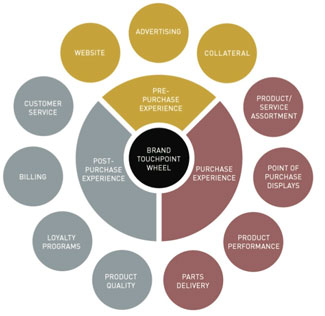
Figure 2. Demonstrating touch points associated with purchase experience stages
Brand communication
Although brand identity is regarded[by whom?] as the most fundamental asset to a brand's equity, the worth of a brand's identity would become obsolete without ongoing brand communication.[28] Integrated marketing communications (IMC) relates to how a brand transmits a clear consistent message to its stakeholders .[23] Five key components comprise IMC:[19]
1. advertising
2. sales promotions
3. direct marketing
4. personal selling
5. public relations
The effectiveness of a brand's communication is determined by how accurately the customer perceives the brand's intended message through its IMC. Although IMC is a broad strategic concept, the most crucial brand communication elements are pinpointed[by whom?] to how the brand sends a message and what touch points the brand uses to connect with its customers.[23]
One can analyse the traditional communication model into several consecutive steps:[19]
• Firstly, a source/sender wishes to convey a message to a receiver. This source must encode the intended message in a way that the receiver will potentially understand.[23]
• After the encoding stage, the forming of the message is complete and is portrayed through a selected channel.[29] In IMC, channels may include media elements such as advertising, public relations, sales promotions, etc.[23]
• It is at this point where the message can often deter from its original purpose as the message must go through the process of being decoded, which can often lead to unintended misinterpretation.[29]
• Finally, the receiver retrieves the message and attempts to understand what the sender was aiming to render. Often, a message may be incorrectly received due to noise in the market, which is caused by "…unplanned static or distortion during the communication process".[19]
• The final stage of this process is when the receiver responds to the message, which is received by the original sender as feedback.[21]
When a brand communicates a brand identity to a receiver, it runs the risk of the receiver incorrectly interpreting the message. Therefore, a brand should use appropriate communication channels to positively "…affect how the psychological and physical aspects of a brand are perceived" [30]
In order for brands to effectively communicate to customers, marketers must "…consider all touch points, or sources of contact, that a customer has with the brand".[31][page needed] Touch points represent the channel stage in the traditional communication model, where a message travels from the sender to the receiver. Any point where a customer has an interaction with the brand - whether watching a television advertisement, hearing about a brand through word of mouth, or even noticing a branded license plate - defines a touch point. According to Dalen et al. (2010), every touch point has the "…potential to add positive - or suppress negative - associations to the brand's equity" [30] Thus a brand's IMC should cohesively deliver positive messages through appropriate touch points associated with its target market. One methodology involves using sensory stimuli touch points to activate customer emotion.[31] For example, if a brand consistently uses a pleasant smell as a primary touch point, the brand has a much higher chance of creating a positive lasting effect on its customers' senses as well as memory.[21]Another way a brand can ensure that it is utilising the best communication channel, is by focusing on touch points that suit particular areas associated with customer experience.[19] As suggested Figure 2, certain touch points link with a specific stage in customer-brand-involvement. For example, a brand may recognise that advertising touch points are most effective during the pre-purchase experience stage therefore they may target their advertisements to new customers rather than to existing customers. Overall, a brand has the ability to strengthen brand equity by using IMC branding communications through touch points.[31]
Brand communication is important in ensuring brand success in the business world and refers to how businesses transmit their brand messages, characteristics and attributes to their consumers.[32] One method of brand communication which companies can exploit involves electronic word-of mouth (eWOM). EWoM is a relatively new[when?] approach identified[by whom?] to communicate with consumers. One popular method of eWOM involves social networking sites (SNSs) such as Twitter.[33] A study found that consumers classed their relationship with a brand as closer if that brand was active on a specific social media site (Twitter). Research further found that the more consumers "retweeted" and communicated with a brand, the more they trusted the brand. This suggests that a company could look to employ a social-media campaign to gain consumer trust and loyalty as well as in the pursuit of communicating brand messages.
McKee (2014) also looked into brand communication and states that when communicating a brand, a company should look to simplify its message as this will lead to more value being portrayed as well as an increased chance of target consumers recalling and recognising the brand.[34]
In 2012 Riefler stated that if the company communicating a brand is a global organisation or has future global aims, that company should look to employ a method of communication which is globally appealing to their consumers, and subsequently choose a method of communication with will be internationally understood.[35] One way a company can do this involves choosing a product or service's brand name, as this name will need to be suitable for the marketplace that it aims to enter.[36]
It is important that if a company wishes to develop a global market, the company name will also need to be suitable in different cultures and not cause offense or be misunderstood.[37] It has also been found[by whom?] that when communicating a brand a company needs to be aware that they must not just visually communicate their brand message and should take advantage of portraying their message through multi-sensory information.[38] One article suggests that other senses, apart from vision, need to be targeted when trying to communicate a brand with consumers.[39] For example, a jingle or background music can have a positive effect on brand recognition, purchasing behaviour and brand recall.
Therefore, when looking to communicate a brand with chosen consumers, companies should investigate a channel of communication which is most suitable for their short-term and long-term aims and should choose a method of communication which is most likely to be adhered to[clarification needed] by their chosen consumers.[35] The match-up between the product, the consumer lifestyle, and the endorser is important for effectiveness of brand communication.
Global brand variables
Brand name
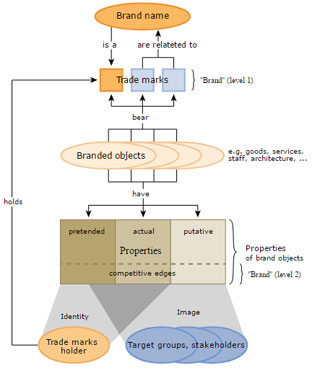
Relationship between trade marks and brand
The term "brand name" is quite often[quantify] used[by whom?] interchangeably with "brand", although it is more correctly used to specifically denote written or spoken linguistic elements of any product. In this context a "brand name" constitutes a type of trademark, if the brand name exclusively identifies the brand owner as the commercial source of products or services. A brand owner may seek to protect proprietary rights in relation to a brand name through trademark registration - such trademarks are called[by whom?] "Registered Trademarks". Advertising spokespersons have also become part of some brands, for example: Mr. Whipple of Charmin toilet tissue and Tony the Tiger of Kellogg's Frosted Flakes. Putting a value on a brand by brand valuation or using marketing mix modeling techniques is distinct to valuing a trademark.
Types of brand names
Brand names come in many styles.[40] A few include:
• initialism: a name made of initials, such as "UPS" or "IBM"
• descriptive: names that describe a product benefit or function, such as "Whole Foods" or "Toys R' Us"
• alliteration and rhyme: names that are fun to say and which stick in the mind, such as "Reese's Pieces" or "Dunkin' Donuts"
• evocative: names that can evoke a vivid image, such as "Amazon" or "Crest"
• neologisms: completely made-up words, such as "Wii" or "Häagen-Dazs"
• foreign word: adoption of a word from another language, such as "Volvo" or "Samsung"
• founders' names: using the names of real people, (especially a founder's name), such as "Hewlett-Packard", "Dell", "Disney", "Stussy" or "Mars"
• geography: naming for regions and landmarks, such as "Cisco" or "Fuji Film"
• personification: taking names from myths, such as "Nike"; or from the minds of ad execs, such as "Betty Crocker"
• punny: some brands create their name by using a silly pun, such as "Lord of the Fries", "Wok on Water" or "Eggs Eggscetera"
• combination: combining multiple words together to create one, such as "Microsoft" ("microcomputer" and "software"), "Comcast" ("communications" and "broadcast"), "Evernote" ("forever" and "note"), "Vodafone" ("voice", "data", "telephone")
The act of associating a product or service with a brand has become part of pop culture. Most products have some kind of brand identity, from common table salt to designer jeans. A brandnomer is a brand name that has colloquially become a generic term for a product or service, such as Band-Aid, Nylon, or Kleenex—which are often used to describe any brand of adhesive bandage; any type of hosiery; or any brand of facial tissue respectively. Xerox, for example, has become synonymous with the word "copy".
Brand line
A brand line allows the introduction of various subtypes of a product under a common, ideally already established, brand name. Examples would be the individual Kinder Chocolates by Ferrero SA, the subtypes of Coca-Cola, or special editions of popular brands. See also brand extension.
Brand identification
Open Knowledge Foundation created in December 2013 the BSIN (Brand Standard Identification Number). BSIN is universal and is used by the Open Product Data Working Group [41] of the Open Knowledge Foundation to assign a brand to a product. The OKFN Brand repository is critical for the Open Data movement.
Brand identity
The outward expression of a brand – including its name, trademark, communications, and visual appearance – is brand identity.[42] Because the identity is assembled by the brand owner, it reflects how the owner wants the consumer to perceive the brand – and by extension the branded company, organization, product or service. This is in contrast to the brand image, which is a customer's mental picture of a brand.[42] The brand owner will seek to bridge the gap between the brand image and the brand identity. Brand identity is fundamental to consumer recognition and symbolizes the brand's differentiation from competitors.
Brand identity is what the owner wants to communicate to its potential consumers. However, over time, a product's brand identity may acquire (evolve), gaining new attributes from consumer perspective but not necessarily from the marketing communications an owner percolates to targeted consumers. Therefore, businesses research consumer's brand associations.
Visual brand identity
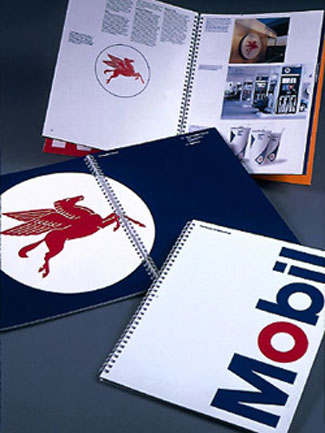
The visual brand identity manual for Mobil Oil (developed by Chermayeff & Geismar & Haviv), one of the first visual identities to integrate logotype, icon, alphabet, color palette, and station architecture.
A brand can also be used to attract customers by a company, if the brand of a company is well established and has goodwill. The recognition and perception of a brand is highly influenced by its visual presentation. A brand's visual identity is the overall look of its communications. Effective visual brand identity is achieved by the consistent use of particular visual elements to create distinction, such as specific fonts, colors, and graphic elements. At the core of every brand identity is a brand mark, or logo. In the United States, brand identity and logo design naturally grew out of the Modernist movement in the 1950s and greatly drew on the principles of that movement – simplicity (Mies van der Rohe's principle of "Less is more") and geometric abstraction. These principles can be observed in the work of the pioneers of the practice of visual brand identity design, such as [Lippincott and Margulies], Paul Rand, Chermayeff & Geismar (later Chermayeff, Geismar & Haviv), and Saul Bass. As part of a company's brand identity, a logo should complement the company's message strategy. An effective logo is simple, memorable, and works well in any medium including both online and offline applications.
Color is a particularly important element of visual brand identity and color mapping provides an effective way of ensuring color contributes to differentiation in a visually cluttered marketplace (O'Connor, 2011).[43]
Brand trust
Brand trust is the intrinsic 'believability' that any entity evokes. In the commercial world, the intangible aspect of brand trust impacts the behavior and performance of its business stakeholders in many intriguing ways. It creates the foundation of a strong brand connect with all stakeholders, converting simple awareness to strong commitment. This, in turn, metamorphoses normal people who have an indirect or direct stake in the organization into devoted ambassadors, leading to concomitant advantages like easier acceptability of brand extensions, perception of premium, and acceptance of temporary quality deficiencies.
The Brand Trust Report is a syndicated primary research that has elaborated on this metric of brand trust. It is a result of action, behavior, communication and attitude of an entity, with the most trust results emerging from its action component. Action of the entity is most important in creating trust in all those audiences who directly engage with the brand, the primary experience carrying primary audiences. However, the tools of communications play a vital role in the transferring the trust experience to audiences which have never experienced the brand, the all important secondary audience.
Brand parity
Brand parity is the perception of the customers that some brands are equivalent.[44] This means that shoppers will purchase within a group of accepted brands rather than choosing one specific brand. When brand parity operates, quality is often not a major concern because consumers believe that only minor quality differences exist.
Expanding role of brand
Branding was meant to make identifying and differentiating a product easier, while also providing the benefit of letting the name sell a second rate product. Over time, brands came to embrace a performance or benefit promise, for the product, certainly, but eventually also for the company behind the brand.
Today, brand plays a much bigger role. Brands have been co-opted as powerful symbols in larger debates about economics, social issues, and politics. The power of brands to communicate a complex message quickly, with emotional impact and with the ability of brands to attract media attention makes them ideal tools in the hands of activists.[45] Cultural conflict over a brand's meaning have also been shown to influence the diffusion of an innovation.[46]
Branding strategies
Company name
Often, especially in the industrial sector, it is just the company's name which is promoted (leading to one of the most powerful statements of branding: saying just before the company's downgrading. This approach has not worked as well for General Motors, which recently overhauled how its corporate brand relates to the product brands.[47] Exactly how the company name relates to product and services names is known as brand architecture. Decisions about company names and product names and their relationship depends on more than a dozen strategic considerations.[48]
In this case, a strong brand name (or company name) is made the vehicle for a range of products (for example, Mercedes-Benz or Black & Decker) or a range of subsidiary brands (such as Cadbury Dairy Milk, Cadbury Flake, or Cadbury Fingers in the UK).
Individual branding
Each brand has a separate name (such as Seven-Up, Kool-Aid, or Nivea Sun (Beiersdorf), which may compete against other brands from the same company (for example, Persil, Omo, Surf, and Lynx are all owned by Unilever).
Challenger brands
A challenger brand is a brand in an industry where it is neither the market leader or a niche brand. Challenger brands are categorised by a mindset which sees them have business ambitions beyond conventional resources and an intent to bring change to an industry.

